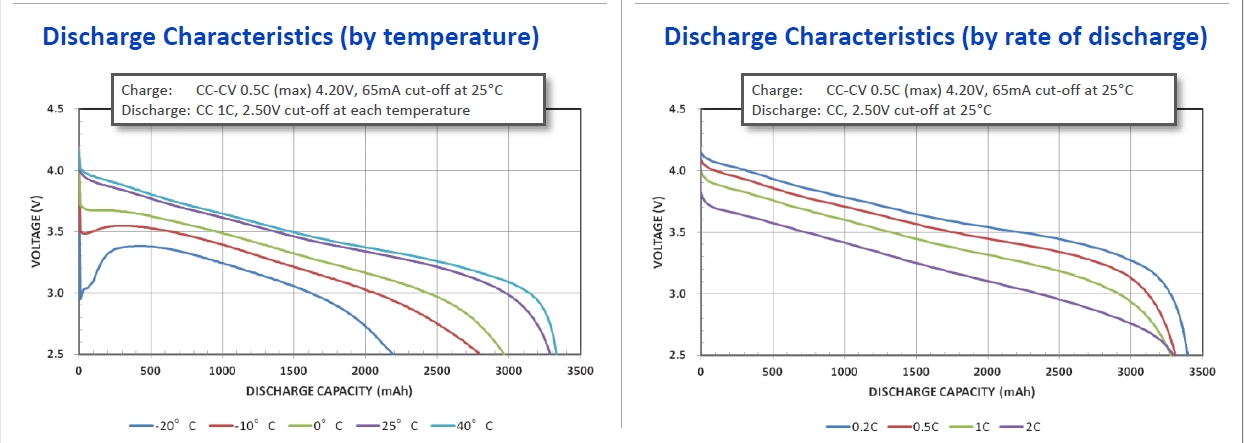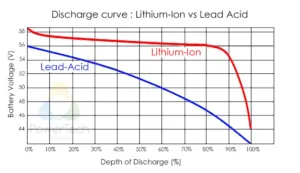I looked around on the IoT for you, and I am hoping this may help your understanding, as it appears to be fairly accurate:-
Battery powered LED trade show lighting for pop-up displays & retractable banner stands. Portable arm light fixtures for trade show booths, art fairs, craft festivals & other exhibitions....

siliconlightworks.com
It is important to note that all Li-ion cells, including the Li-ion cells contained in our Mobile Power Centers, are sensitive to voltage. A Prolonged low voltage condition within a Li-ion cell may cause the dissolution of metals (principally copper). Copper dissolves into the electrolyte solution at open circuit voltages below ~0.7 volts. This dissolved copper is re-plated within the cell upon subsequent charging and can cause undesirable effects and almost certainly will compromise cell performance (
e.g. low capacity, poor cycle life, high self-discharge).
Similarly, high voltage can also cause the degradation of Li-ion cells, especially at elevated temperature. When a Li-ion battery is plugged into a charger, charging continues along a prescribed path until a state of charge ("SOC") of 100% is sensed by the circuitry. The charging is then terminated and the battery is allowed to very slowly discharge. It is detrimental to the cells to be kept at 98-100% SOC for prolonged periods of time (i.e. more than 10 days). This is why many cells are allowed to discharge to around 95% SOC or less before charging is re-initiated, even while connected to a charger.
The nature of Li-ion cells is such that the relationship between state of charge ("SOC") and voltage is fairly flat throughout much of the cell’s discharge range. A typical discharge voltage curve is shown below:-
View attachment 32172
The rapid fall of voltage at the end of the discharge cycle provides a relatively accurate means of determining when energy will run out. However, this also means that the SOC drops much more rapidly and can lead to an over-discharged condition if the cell or battery is left to sit for prolonged periods at a low SOC. This is due to the fact that Li-ion cells have an inherent self-discharge rate independent of any circuit load. This self-discharge rate is quite low at room temperatures around 20-25°C or less. Values of around 2% per month are typical. However, this rate can more than double when cells are exposed to high temperatures. Furthermore, ambient temperature can have a profound effect on the discharge voltage curve and must be considered during transportation and storage when the cells may be exposed to extreme high or low temperatures.
Well designed electronics will keep the cell(s) at somewhere between 4.2 and just under 3 volts. This is the safe "working area" for a Li-ion cell.
You can see that the battery discharges faster as it gets to the end of the charge. Just what you are noticing.
Multiply these single cell voltages by the number of cells in series in your battery.
For example, a 36 volt (nominal) battery, will have 10 blocks of series connected cells (number of cells in a block, connected in parallel is variable due to capacity and current design requirements!).
Never leave a discharged battery to its own devices for months, as the safety electronics can and will prevent further charging, and only a "Zer0 Volt Charger" MIGHT recover it, but damage will have been done.
Any questions, just ask please.
Andy











